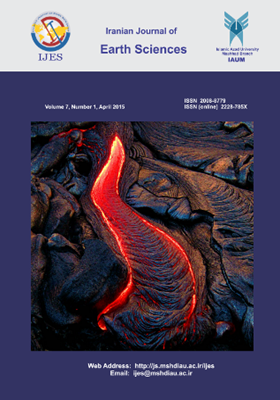Structural overview of the Halab-Gheydar area, southwest of Zanjan, NW Iran
الموضوعات :Rasoul Esmaeili 1 , Ali Faghih 2 , Mahnaz Rezaian 3 , Mohammad Ebrahimi 4
1 - Department of Earth Sciences, College of Sciences, Shiraz University, Shiraz, Iran.
2 - Department of Earth Sciences, College of Sciences, Shiraz University, Shiraz, Iran.
3 - Department of Earth Sciences, Faculty of Sciences, Institute for Advanced Studies in Basic Sciences, Zanjan, Iran.
4 - Department of Geology, Faculty of Sciences, University of Zanjan, Zanjan, Iran.
الکلمات المفتاحية: Iran, Structural analysis, Zanjan, geomorphic, fault-related fold,
ملخص المقالة :
Understanding the folding style of a fold-thrust belt is crucial to understand the nature and structural history of structures that may trap natural resources within the belt. In this research, the geometry and mechanism of a number of fault-related folds has been investigated based on field data and satellite image interpretations. The main study areas are: the Sohrevard and Ushtaniyan anticlines, Bahman and Halab synclines, and Gharahdagh, Halab, and Gheydar thrust faults, which have a NW-SE direction. These thrust faults control the morphology and structural framework of the Halab-Gheydar area. Geomorphic features of the folds suggest that they are fault-related folds. The structural style of the faults and associated folds indicate that these faults were reactivated during the Alborz deformation event.


